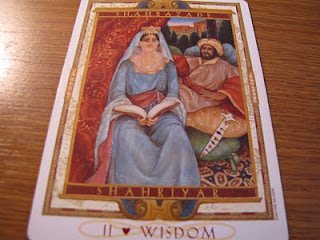
If you have been following my blog posts, you know that I am in a transitional phase of my life. This week has been especially hard for me as I am coming to terms with the finality of the closing of one door, and the opening of a new one. As of yet, that new path is not fully illuminated, giving me moment to feel anxiety, fear, and depression.
Today, as I spent hours working on tasks for that path that has been closed down, I felt a growing resentment and anger building inside of me. It led, later this afternoon, to a tremendous wave of depression.
I yelled at the dog.
I got mad at my (wonderful) husband for just being himself.
I wanted to yell and kick and scream at life for making me hurt and feel and grow.
And it took me quite a while to realize that I was letting life win.
"Physician, heal thyself," quickly jumped into my head. How can I expect people to come to me for guidance if I can't even get my figurative stuff together?
So now, with the house quiet, the dog and husband asleep and the cats hiding doing cat things, I am healing myself.
I found a quotation upon which to meditate. I lit a candle. And I opened my blog.
Here's the quotation I found tonight. (I have hundreds, collected over many years. In college, my nickname was The Floor Philosopher!)
"Circumstances are the rulers of the weak; they are but the instruments of the wise." --Samuel Lover.
This quotation reminded me of the great power of karma. My anger today stemmed from the resentment of doing things for an institution that has decided that I am not worthy of remaining there. And yet, I am doing good work. Important work. Work that will make changes and create a footprint for the future.
And I realized, after I lit the candle and focused on what I DID today, instead of what I FELT, that today, I was letting the circumstances rule me. Instead, I should be using them as instruments to secure my new path.
For you see, today I was working on organizing a conference. I was sorting through paper proposals and arranging paper titles and feeling a tremendous exhilaration because my work had shown great results.
Due to my efforts, and mine alone, we had a tremendous response to our call for papers. Because of my diligence and dedication, we will have 100 visitors to our campus in April, to share in the dissemination of historical knowledge. This conference should serve to engage the students and hopefully encourage some of them to pursue graduate degrees in the field. It is their time to shine.
And I was the one who made it possible. Little old me. The one who isn't good enough for the institution that will be hosting this miraculous event.
Oh, and did I mention that I have recently applied for a job at another institution doing precisely this very thing? The title is Director of Continuing Education, but it is essentially organizing, planning, and overseeing conferences and other non-credit educational experiences. In other words, teaching beyond the classroom. What a dream job for me.
As my friend, Christine writes, finding our bliss does not mean that we are happy all the time. Rather, it means that we acknowledge that we are on the right path, and we don't let the negatives drag us down.
Next week, I will be spending a week on Marco Island, in Florida, with my parents. I plan to spend the time reflecting, writing, and studying for my new path. Oh, and expect a few blogs from down there, as well!
And whatever happens, I know, between the bouts of anxiety and depression that sometimes catch me off guard, that my new path lies before me, just waiting for me to take those first steps.
As I said before on this blog, we all know the answers. They lie inside of each of us. It's just that at times we need some help finding the right questions to ask.
So, I'm finding mine. Slowly but surely.
What are yours?















